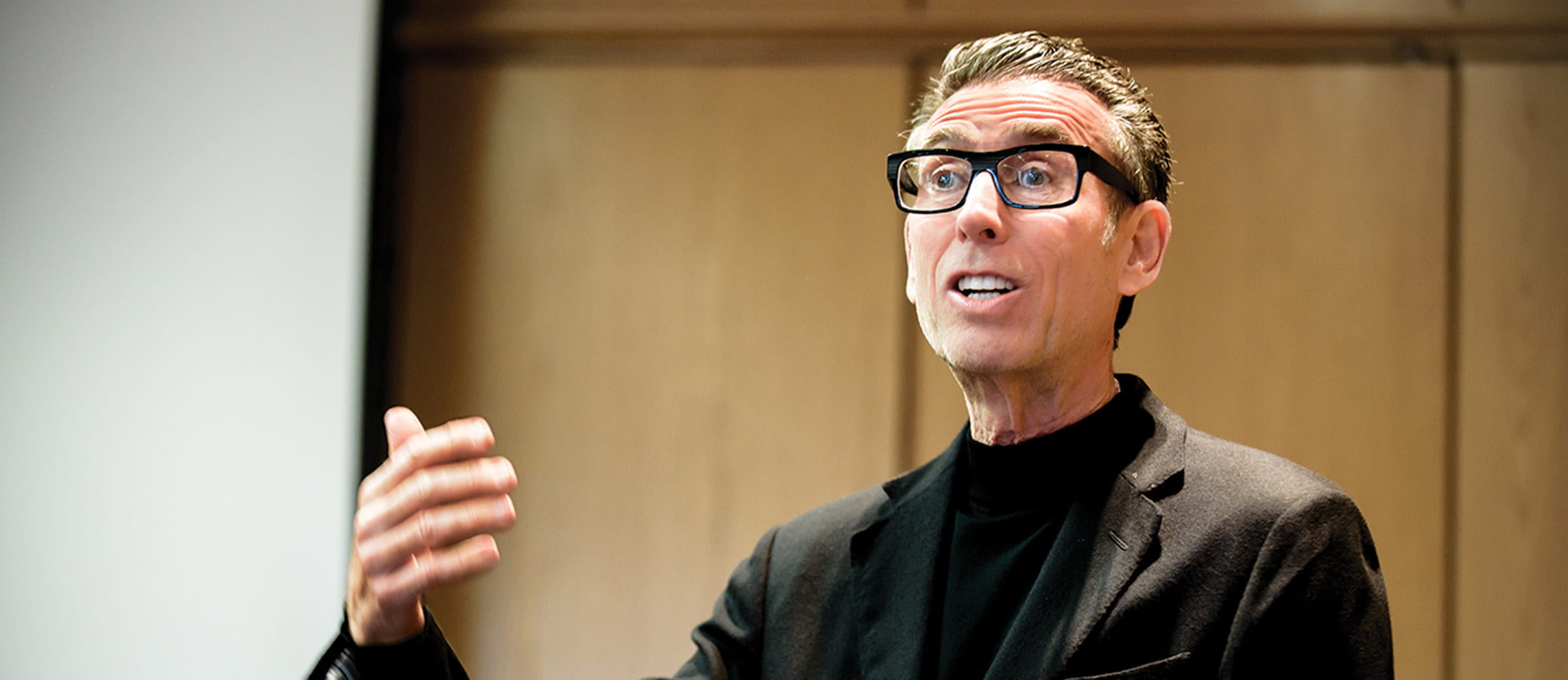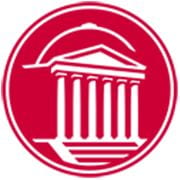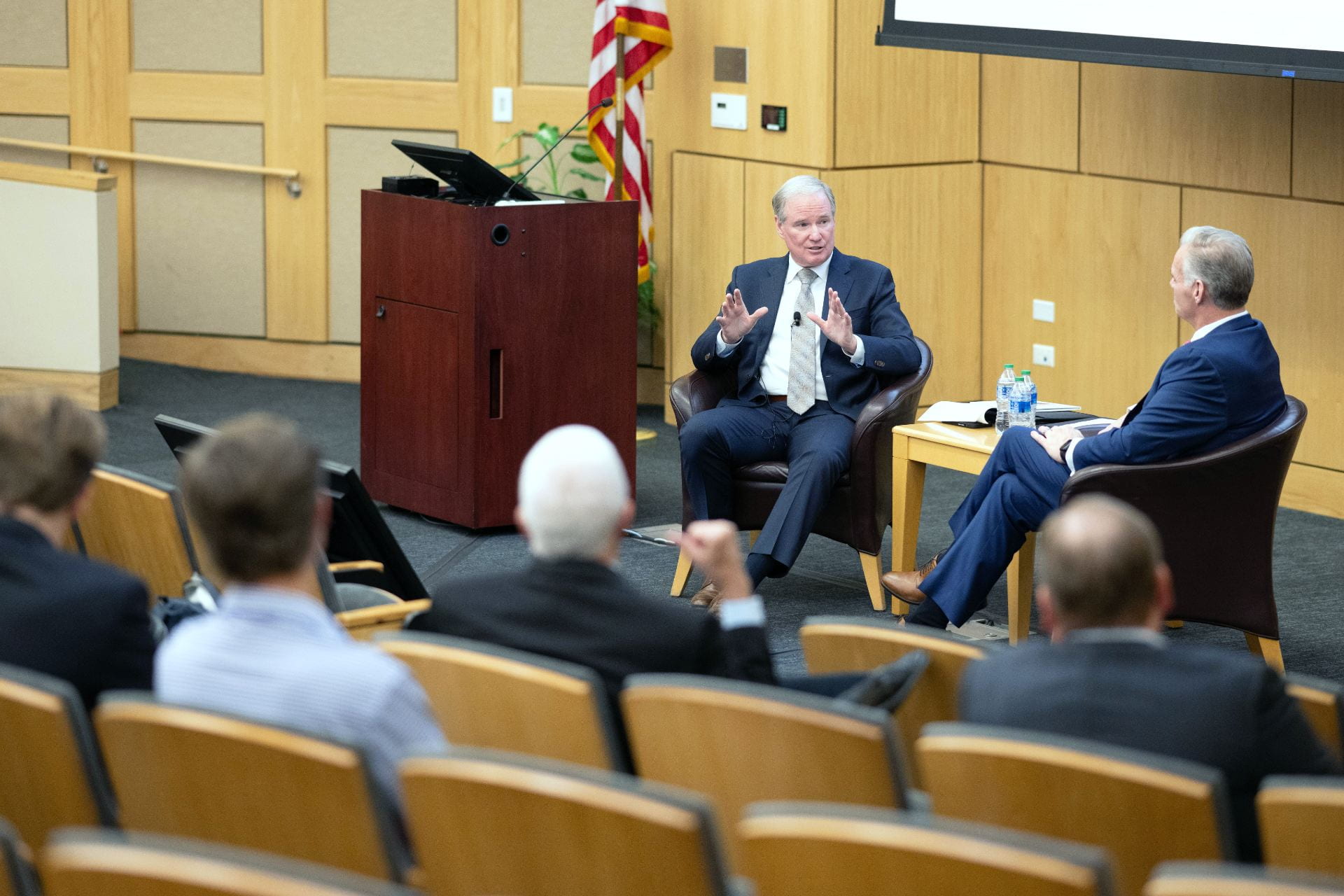Research by Cox professors is a vast web of knowledge and insight, reaching every corner of all things business. Flowing through the disciplines, the streams of literature are like the Danube River, prolific in how they transect borders. Research at the Cox School pushes boundaries, identifies new frontiers and illuminates pressing issues affecting business and society.
The SMU Cox faculty is highly ranked among the top business schools in the world for research productivity. For a small school, this is a great accomplishment, the result of years of hard work. “Over the last decade, we have been able to attract the best talent coming out of Ph.D. programs and to retain productive senior faculty as well,” says Bill Dillon, senior associate dean and Herman W. Lay Professor of Marketing and Professor of Statistics. Just recently, several Cox faculty members have been recognized by Poets&Quants as among the most impressive in the business.
Out of the tower
Faculty research can have a wide-ranging impact — from advances in a discipline to the world of policy. Recently, Kumar Venkataraman, James M. Collins Chair in Finance, was appointed by the U.S. Securities and Exchange Commission to serve on a new fixed income advisory committee, charged with identifying improvements in bond markets for investors. His research about how bond markets were becoming less liquid in the aftermath of the financial crisis was a catalyst to the appointment.
This study, forthcoming in the top-tier Journal of Finance, is co-authored by Cox colleagues Bill Maxwell, Mary Jo Vaughn Rauscher Chair in Financial Investments and academic director, The Don Jackson Center for Financial Studies and Center; Stacey Jacobsen, assistant professor of finance; and Hank Bessembinder of Arizona State University. It shows that banking-related regulation negatively impacted the ability, or willingness, of bank dealers to supply capital for market making in bond markets. Venkataraman noted, “Non-bank dealers stepped in, but they tend to be of smaller size and unable to fully offset the reduction in capital. Thus, it might be more difficult today for a mutual fund to buy or sell a corporate bond.” In an earlier co-authored study, he showed that increased transparency, owing to reporting requirements, reduced trading costs, which was a benefit to public welfare. Regulators noticed.
Venkataraman’s extensive research efforts in market microstructure and equity market design translated to bond markets. “Regulations need to be carefully designed as they offer benefits but also impose costs on markets,” he notes. “Although larger than stock markets, bond markets continue to be dominated by old methods that do not exploit trading technology.”
“Being an engaged researcher helps in being an effective teacher, and vice-versa. Explaining complex ideas to students and industry professionals forces me to step out of the ivory tower.”
In the field of finance, researchers typically examine issues that are topical and important to regulators and markets, Venkataraman notes. To obtain “color” about the underlying problem, he frequently reaches out to stakeholders engaged in the debate such as regulators, investment bankers, issuers, investment professionals and traders. “These conversations help me to design better experiments for research and to learn about institutional arrangements in financial markets, which I share with students,” he mentions. The stakeholder engagement often leads to guest lecturers, student mentors and advisory board members.
For Venkataraman, “It is difficult to distinguish when I switch hats from being a teacher, a researcher and a promoter of the Cox-brand.” Being an engaged researcher helps in being an effective teacher, and vice-versa. “Explaining complex ideas to students and industry professionals forces me to step out of the ivory tower,” he says.
Research rigor
Successful academics spend 60 to 70 hours a week on research and teaching, Dillon emphasizes. “Creating knowledge is not easy. With low acceptance rates at top journals and more faculty competing for limited journal pages, this process is extremely challenging.” Given the number of revisions, it usually takes 18 months to two years to have a paper accepted. “At Cox, we demand excellence in the classroom, and faculty do a great job training our students,” says Dillon. Students recognize the richness research excellence brings to the classroom. “A challenge,” Dillon says, “is to continue to provide the necessary resources for faculty success.”
To have a chance at tenure, a professor will need to have four to six A-level academic publications and a reasonable number of citations of their work. A-level publications are discipline-specific and are the most prestigious outlets for professors’ work. These journals have the lowest acceptance rates, in the low teens, and the most academic citations. “At SMU, we have a six-year tenure clock, which makes the four-to-six A-level publications criterion rigorous,” says Dillon, speaking from firsthand experience. In 2009 the Journal of Marketing ranked the 50 most prolific scholars according to publications in the top marketing journals over the period 1982-2006. Dillon ranked 16th in the world out of more than 2,700 scholars. A large number of academic papers are vying for a very limited number of top journal pages, so rejection rates are high. At Cox, tenured faculty are expected to stay “research active” and to have one A-level publication every two-to-three years.
Cox supports research opportunities for faculty in several ways. Teaching schedules allow for research and resources are provided for data collection. Faculty also have travel budgets to attend and present papers at conferences. At these conferences, faculty receive valuable input about their research, which increases the likelihood of acceptance to a journal. “By creating and maintaining a collegial environment, the school provides a supportive environment for faculty to exchange ideas and encourages junior and senior faculty interaction,” according to Dillon.
“Several ITOM faculty papers have been accepted in top-tier academic journals, such as Management Science, Information Systems Research and Manufacturing and Service Operations Management.”
In their research processes, faculty often reach out to industry experts to gather information about salient issues, problems and trends. As a frequently published researcher of marketing and statistics, Dillon points out that his own interests have been shaped by interactions with marketing research professionals and brand managers.
Likewise, real-world professional challenges are sometimes at the heart of research projects undertaken by the Information Technology and Operations Management (ITOM) department. “The ITOM faculty is composed of a highly engaged set of researchers with diverse, yet intersecting research interests,” says Amit Basu, ITOM department chair and the Carr P. Collins Chair in Management Information Systems. Several faculty papers have been accepted in top-tier academic journals, such as Management Science, Information Systems Research and Manufacturing and Service Operations Management. Leading companies and government agencies sometimes sponsor research projects, he adds.
“Most of our faculty are attacking practical problems, the majority of work being translatable to real-world problems,” adds Dillon. “Though the research would be classified as ‘applied,’ since focused on a real-world problem, the models and protocols created by faculty are quite technical and sophisticated.” Cox does not dictate a research agenda, whether it is basic (known as pure or fundamental research) or applied. “We would like faculty to publish work that has traction within and outside the academy, whether it’s applied or basic,” Dillon says.
Connecting to the world
Increasingly, the media cite research papers, both working papers and published research, in mainstream articles. The Wall Street Journal and The Economist regularly mention research in their publications. For example, The Wall Street Journal recently featured research by visiting Assistant Professor of Marketing Milica Mormann; it cited findings about when investors see the color red used to present a firm’s financial data, they expect less from future stock returns than they do when the same data are presented in black. Given their research repertoires and knowledge of subject matter, the media look to Cox professors for commentary and answers.

Since 2004, Cox has been “translating” the work of its academics into language that the media and other stakeholders can more easily access. Deciphering 20-to-40 page journal articles can be an overly intense exercise for busy journalists and practitioners. The highlighted research is accessible on the website for all to learn about what is going on in the minds of the academics — the experts at Cox. For the academic community, an upcoming Cox working paper series integrated with Social Sciences Research Network will offer greater visibility.
An expertise in research or a subject matter can lead to true thought leadership. Robin Pinkley, Janet and Craig Duchossois Endowed Professor of Management and Organizations, is renowned in the field of negotiations, and her popular gain-gain approach has served as the foundation for classes and curricula in mastering negotiations, for example. Filling a void, her work has supplied a growing demand for advances in negotiating skills for business managers and executives.
“Professor of Management and Organizations Robin Pinkley, renowned in the field of negotiations and her popular gain-gain approach, has served as the foundation for classes and curricula in mastering negotiations.”
Sometimes research shows the world a better way. In the strategy department, Assistant Professor Julian Kolev highlighted patterns in the labor market that went beyond the headlines followed by the crowd. Tough news tends to come in waves, he showed — like the Zika virus, financial market woes and broken Syrian cease-fires. In the case of layoff announcements, it arrives in packs, like a disease outbreak. The way in which Fortune 500 companies manage their financial reputations influenced the timing of layoffs, with negative consequences for the labor market and economy as a whole.
Other times business gets a nudge in the right direction. ITOM Professors Amit Basu, Sree Bhaskaran and Rajiv Mukherjee have been using game-theoretic models to analyze how information technology innovations and online resources are reshaping new product development and supply-chain management. In a recent paper, they also provide guidance on the effective positioning and pricing strategies for online services that match up business partners. Tom Tan, Assistant Professor of ITOM, works on the impact of innovative technologies, such as tabletop devices in the hospitality industry, and offers insights for more widespread adoption and better service delivery.

Cox professors are also pioneers. Associate Professor of Accounting and EY Faculty Fellow Neil Bhattacharya’s analysis of high-frequency traders’ impact on market price efficiency and fundamentals was a first in academic research. “We need to understand whether they are incorporating, facilitating or obfuscating the assimilation of fundamentals information into prices,” says Bhattacharya. “It’s important to know because they are the 800-pound gorillas in the market.” In all of these patterns and findings, how can the world absorb these insights?
“Creating a research-focused school is one of our key performance indicators.”
The task of research dissemination looms large. In the months ahead, more efforts will be made to promote the research excellence and insights at Cox. “We are commissioning a series of publications that will highlight the accomplishments, both research and teaching, of each Cox department,” says Dillon. Additionally, a new website will “more conspicuously” feature faculty accomplishments. “We simply need to do a better job of marketing the outstanding Cox faculty that we have in place,” Dillon states.
Culture of excellence
The faculty that are active in research are leading experts in their fields, notes James Linck, Distinguished Chair in Finance and chair of the research-prolific finance department. “Students benefit from being exposed to the latest theories and evidence, and often get a first-hand look at new insights in the field,” he adds. “Staying active in research through publishing, attending seminars, and presenting their work, Cox faculty stay engaged, informed, and on the leading edge.”
Being a part of a top research institution creates a culture of research excellence. “The ability to create a research-focused school means that we can attract high-quality faculty who want to be part of that culture,” says Dillon. “Research productivity is contagious.” It creates an exciting environment wherein faculty co-authoring and researching projects become the topics of the day. “Bottom line: Creating a research-focused school is one of our key performance indicators,” Dillon concludes.














